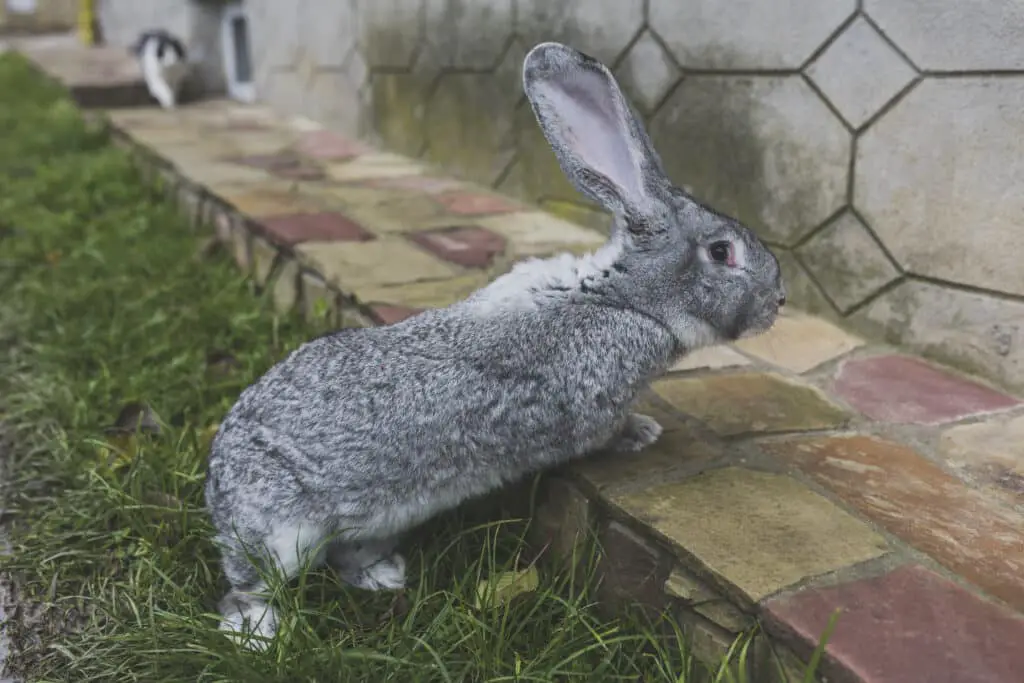Introduction to Argente Rabbits
Table of Contents
ToggleArgente rabbits, with their shimmering coats and endearing personalities, have long been cherished in the realms of rabbit enthusiasts and pet lovers alike. Known for their distinct appearance and rich historical background, these rabbits aren’t just pets; they’re a piece of living history that enthusiasts are eager to preserve. The charm of Argente rabbits lies not only in their striking looks but also in the unique value they add to the lives of those who care for them. They embody a blend of beauty, companionship, and a touch of aristocracy, making them a favored choice among those who appreciate their refined qualities.
Origins and History
The journey of the Argente rabbit began in the lush landscapes of France, where they were first bred during the 19th century. Known for their unique silver coat, which appears to glisten under the sunlight, these rabbits quickly caught the eye of rabbit fanciers and breeders. Over the years, their popularity spread beyond the French borders, reaching other parts of Europe and eventually making their way to the United States and other countries. As they were introduced to new regions, Argente rabbits became a staple in show circuits and breeding programs, admired for their elegance and serene demeanor.
The rise in their popularity wasn’t just due to their physical beauty. Early breeders also prized the Argente for its gentle temperament, which made it an ideal show rabbit and a delightful companion animal. This combination of traits ensured that the Argente rabbit was not only featured in countless competitions but also cherished in the homes of rabbit lovers around the world.
Physical Characteristics
When it comes to physical allure, Argente rabbits are indeed a standout breed. Typically weighing between 5 to 8 pounds, they exhibit a robust yet graceful physique. Their most captivating feature is undoubtedly their coat, which comes in an array of colors including Champagne, Crème, Brun, Bleu, and Noir. Each color has its unique shade and sheen, but all share the common characteristic of a silky, dense fur that feels luxurious to the touch.
The fur of an Argente rabbit is not just beautiful; it’s also a marker of their breed standard. The ideal Argente has a coat that sparkles with a silver-like quality, achieved through a perfect mix of black and white hairs that are evenly distributed throughout. Their eyes, sparkling with intelligence, can be shades of brown or a striking blue, depending on the variant. Breed standards also note the importance of their well-rounded body shape, strong legs, and an alert posture, with ears that stand erect, giving them a look of constant curiosity.
These characteristics are not just for aesthetic pleasure; they also reflect the breed’s health and vitality, aspects that are crucial for breeders and judges alike in the show ring. The physical traits of the Argente rabbits, combined with their calm and affable nature, make them not only a competitor’s delight but also a pet owner’s dream.
By understanding and appreciating these physical traits, breeders and enthusiasts can better care for their Argente rabbits, ensuring these magnificent animals continue to thrive both in homes and competitions.
Temperament and Social Behavior
Argente rabbits are often celebrated for their serene and affable nature, making them excellent companions for families and rabbit enthusiasts alike. Known for their gentle demeanor, they can bring joy and tranquility to any household. These rabbits are particularly suitable for homes with children due to their patient and tolerant attitude. They relish attention and can form strong, affectionate bonds with their caretakers, making them not just pets, but beloved family members.
In social settings, Argente rabbits are typically easygoing. Their ability to adapt to various environments and their friendly interactions with other pets make them ideal for households with a diverse animal family. However, like all animals, introductions to other pets should be handled cautiously and gradually to ensure all pets are comfortable and safe.
Habitat and Living Conditions
Creating a suitable living environment for an Argente rabbit is essential for their health and happiness. Whether you choose to house your rabbit indoors or outdoors, there are several key factors to consider to ensure their space is safe, comfortable, and stimulating.
Indoor Living: When setting up an indoor habitat, ensure there is ample space for your rabbit to move around freely. A large enclosure, free from hazards such as loose wires or toxic plants, is essential. The area should be well-ventilated, away from direct sunlight and draughts, to maintain a comfortable temperature. Incorporating hiding spots and toys can also help stimulate their natural behaviors and provide a sense of security.
Outdoor Living: For those preferring an outdoor setup, a secure, weather-proof hutch is crucial. It should be spacious enough to allow for free movement and provide shelter from the elements. The enclosure should be raised off the ground to prevent dampness and to deter predators. Additionally, providing a run or fenced area where the rabbit can graze and exercise safely under supervision will contribute to their well-being.
Diet and Nutrition
A balanced diet is fundamental to keeping an Argente rabbit healthy. Their diet should primarily consist of high-quality hay, which aids in digestive health and dental care by ensuring proper wear of their teeth. Fresh vegetables should also be a part of their daily intake, providing necessary vitamins and minerals.
Ideal Diet Composition:
- Hay: Fresh, clean hay should make up about 70-80% of their diet and be available at all times.
- Vegetables: Dark, leafy greens like romaine lettuce, kale, and parsley should be included daily. Offer a variety of vegetables to keep the diet interesting and nutritionally balanced.
- Pellets: A small portion of high-fiber pellets can complement their intake but should not exceed 5% of their diet.
Common Dietary Mistakes:
- Overfeeding pellets can lead to obesity and other health issues.
- Insufficient hay can result in dental problems and digestive disturbances.
- Introducing too many new foods at once can cause digestive upset.
To ensure a healthy diet, introduce new foods gradually and monitor your rabbit’s health and weight regularly. Always provide fresh, clean water in a stable dispenser to encourage regular drinking.
Health and Wellness
Argente Rabbits, like all breeds, have their specific health considerations that require attentive care. While generally robust, they are prone to some conditions that caretakers should be aware of to ensure their rabbits live a long, healthy life.
Common Health Issues:
- Dental Problems: Due to their continuously growing teeth, Argentes require a diet high in fibrous materials to naturally wear down their teeth. Overgrown teeth can lead to difficulty eating and severe pain.
- Gastrointestinal Stasis (GI Stasis): This serious condition occurs when the digestive system slows down or stops, often due to a poor diet, stress, or dehydration.
- Sore Hocks: This issue arises when the rabbit’s feet become irritated, typically due to hard or unclean flooring.
Preventive Measures:
- Regularly monitor their diet to ensure it is high in fiber with adequate hay.
- Provide a clean, comfortable living environment with soft bedding to protect their feet.
- Keep stress levels low by maintaining a calm, stable environment.
Importance of Veterinary Check-ups: Regular visits to a veterinarian experienced in rabbit care are crucial. These check-ups can catch potential health issues before they become serious, and vaccinations can prevent common diseases. Always be on the lookout for changes in behavior or eating habits, as these can be early signs of illness.
Breeding and Reproduction
Breeding Argente Rabbits should be approached with responsibility and care, prioritizing the health and welfare of the animals involved.
Ethical Breeding Practices:
- Health Screening: Ensure both parents are genetically healthy and free from hereditary diseases.
- Age Considerations: Does should be at least 6 months old and bucks around 7 months old before breeding to ensure they are mature enough for reproduction.
Managing Health of Does and Kits:
- Provide a nutritious diet that supports pregnancy and nursing.
- Ensure the nesting area is quiet, comfortable, and safe for the doe to give birth and care for her kits.
Common Breeding Challenges:
- Infertility issues or complications during birth can occur.
- Kits may require hand-rearing if the mother cannot care for them.
Grooming and Daily Care
Regular grooming and daily care are essential to keep your Argente Rabbit in top condition and prevent common health issues.
Grooming Requirements:
- Coat Care: Brush your Argente Rabbit’s coat regularly to prevent matting, especially during molting periods. Use a soft brush to accommodate their sensitive skin.
- Nail Trimming: Keep their nails trimmed to prevent overgrowth that can lead to discomfort or mobility issues.
Daily Care Routines:
- Check their living space daily to ensure it is clean and free from hazards.
- Regularly inspect their body for any signs of injury or illness, such as patches of missing fur or sudden changes in behavior.
- Provide ongoing dental care by ensuring ample hay and chew toys to help wear down their teeth naturally.
Community and Resources
Becoming involved in rabbit communities, both locally and online, can significantly enhance your experience as an Argente Rabbit owner. These communities offer support, share knowledge, and provide a platform for enthusiasts to connect and exchange ideas.
Engagement Opportunities:
- Local Rabbit Clubs: Joining a local rabbit club can provide opportunities to meet other rabbit owners, share care tips, and participate in local events.
- Online Forums and Social Media Groups: Platforms like Facebook, Reddit, and specialized rabbit forums are excellent places to ask questions, find resources, and connect with a global community of rabbit lovers. If you’re looking for more information on rabbit breeds and care tips, explore our extensive resource page on rabbits to deepen your understanding and enhance your rabbit care practices.
Resources for Rabbit Care:
- Rabbit Shows: Attending rabbit shows can be enlightening. You can learn from seasoned breeders, see various rabbit breeds, and understand what makes an Argente Rabbit stand out.
- Reputable Breeders: Always choose breeders who are well-respected and follow ethical breeding practices. They should be willing to provide health records and support even after you take your rabbit home.
- Educational Materials: Books, websites, and online courses on rabbit care can be invaluable. Reliable sources like the House Rabbit Society offer comprehensive guides on everything from diet to health care.
Key Takeaway
Owning an Argente Rabbit is a delightful experience that brings joy and companionship into your life. However, it comes with significant responsibilities. These rabbits require dedicated care, including proper diet, regular grooming, and social interaction to thrive.
As an Argente Rabbit owner, you are encouraged to continually educate yourself on best practices in rabbit care and to stay connected with the rabbit community for support and advice. By embracing the responsibilities and dedicating time to their well-being, you will ensure that your Argente Rabbit lives a happy, healthy, and fulfilling life.
Frequently Asked Questions About the Argente Rabbit
What is the typical lifespan of an Argente Rabbit?
With proper care, Argente Rabbits can live for 7 to 10 years, sometimes longer.
Are Argente Rabbits suitable for families with children?
Yes, Argente Rabbits are known for their gentle and friendly nature, making them excellent family pets.
Can Argente Rabbits be trained?
Absolutely! Argente Rabbits are intelligent and can be trained to use a litter box, come when called, and perform simple tricks.
What is the best way to handle an Argente Rabbit?
Support their hindquarters and hold them close to your body to make them feel secure.
Where did the argente rabbit come from?
The Argente rabbit originated in France. It was first developed in the late 19th century.
Is the Argente Rabbit a rare breed?
While not rare, they are less common than some other rabbit breeds.
Can Argente Rabbits live outdoors?
They can, provided they have a secure enclosure and are protected from predators and extreme weather.
If you’re interested in learning about other species, be sure to check out our article on Columbian Ground Squirrel.



